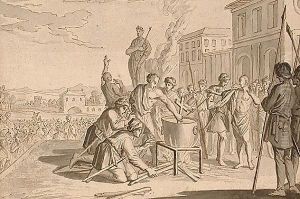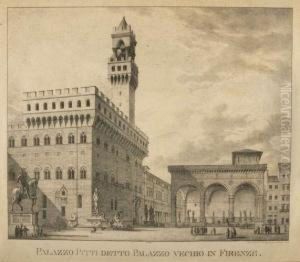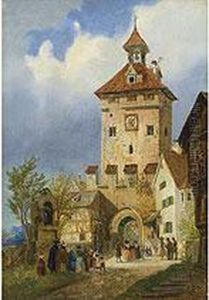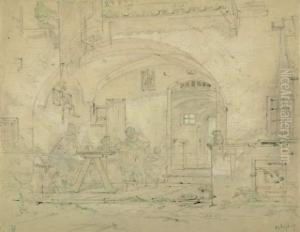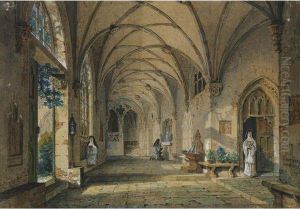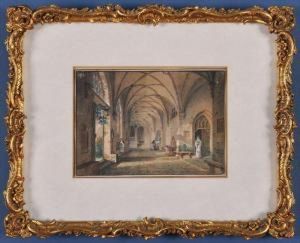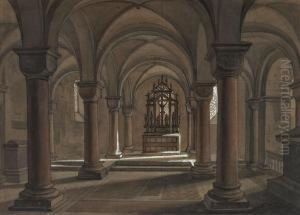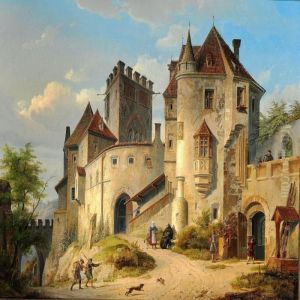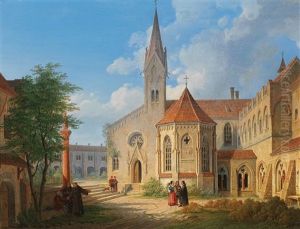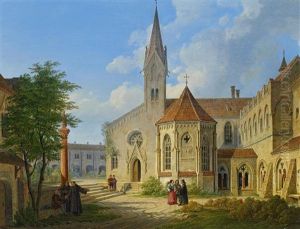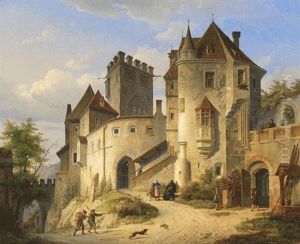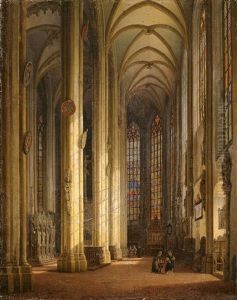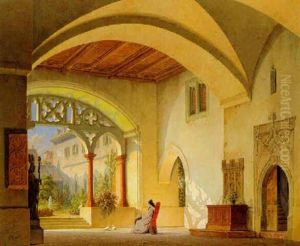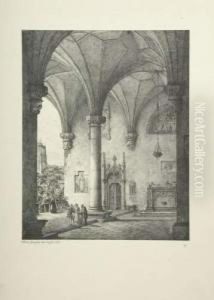Simon Quaglio Paintings
Simon Quaglio was a notable German painter, stage designer, and architect, born into the distinguished Quaglio family of artists on March 9, 1795, in Munich, Germany. His father, Giuseppe Quaglio, was a renowned stage designer and painter, and his siblings were also involved in the arts. The family's legacy can be traced back to the Lombard painters of the 16th century, which provided a rich artistic environment for Simon's upbringing and education.
Simon Quaglio's artistic journey was profoundly influenced by his family. He was trained by his father and his older brother, Angelo Quaglio, who was also a respected stage designer. Simon's early works were primarily in the realm of theater, where he designed stage sets for various productions, demonstrating an exceptional talent for creating atmospheric perspective and detailed architectural backgrounds.
Throughout his career, Quaglio worked in various cities across Europe, including Munich, where he contributed to the designs of the Court Theatre, and Berlin, where he worked for the Royal Theatre. His stage designs were characterized by their intricate details and his ability to create a sense of depth and realism on the flat surface of theater backdrops. Quaglio's set designs played a significant role in the development of stage scenery in the 19th century.
Apart from his contributions to theater, Simon Quaglio was also known for his architectural paintings. His works often depicted historical buildings with romantic and picturesque qualities, capturing the essence of the Bavarian and Northern Italian landscapes and architecture. His paintings reflected his keen interest in the Gothic and Romantic styles of architecture that were popular during his time.
Simon Quaglio's artistic legacy is preserved through his numerous stage designs and paintings, many of which can be found in museums and private collections. His work is often studied in the context of 19th-century stage design and the Romantic movement in art. Quaglio remained active in the arts until his later years, passing away on August 15, 1878, in Munich. His contribution to the visual arts, particularly in the realm of stage design, remains an important chapter in the history of European art.
